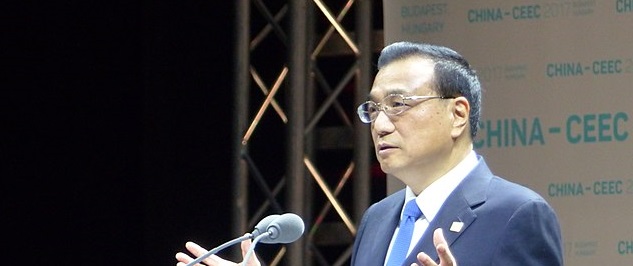Deeper EU-China cooperation in the near future?
April 13, 2019 | Expert Insights

Given pre-summit tensions, the release of a statement and commitment to a timetable for developing a monitoring mechanism is an achievement. Concessions made by Chinese Premier Li Keqiang are evidence of Beijing’s desire to keep EU on its side ahead of G20 summit in June 2019.
Background
Sino–European relations were established in 1975. According to the European External Action Service, the EU and China relations aim for cooperation in the areas of "peace, prosperity, sustainable development and people-to-people exchanges. "The EU is China's largest trading partner, and China is the EU's second largest trade partner after the United States, while the EU has put an arms embargo and numerous anti-dumping measures in place.
In the jointly adopted EU-China 2020 Strategic Agenda for Cooperation of 2013, the EU reaffirmed its respect for China's sovereignty and territorial integrity, while China reaffirmed its support to EU integration. An annual EU-China Summit is being held each year to discuss political and economic relations as well as global and regional issues.
Tensions between China and the EU rose suddenly when Italy accepted to join the Belt and Road Initiative (BRI) without consulting with the EU parliament for prior consent. There have also been persistent concerns from the EU about the lack of access to Chinese markets for European companies despite the openness of Europe for Beijing’s industries.
Analysis
After overcoming the threat of a walkout by European negotiators, China and the European Union managed to conclude their annual summit in Brussels by agreeing to create a mechanism for monitoring each other’s pledges regarding the opening up of their markets.
In a joint statement issued by Chinese Premier Li Keqiang, European Council President Donald Tusk and European Commission President Jean-Claude Juncker, the two sides said they would “establish a political mechanism to continuously monitor the progress in the negotiations and to report to leaders by the end of the year on the progress made”.
The move is a big step towards the creation of an EU-China Comprehensive Investment Agreement by next year to improve market access and eliminate practices that discriminate against foreign investors.
China agreed that “there should not be forced transfers of technology” – a long-time bugbear for European and other companies that have entered into joint ventures with Chinese partners – while Li reiterated his promise to give EU businesses greater access to China’s markets.
He did not mention specific industries, but the telecoms, education and medical services sectors have been mentioned in the past.
“When we say it, we have got to do it,” Li said. Diplomatic observers said that given the pre-summit tensions, the release of the joint statement and commitment to a clear timetable for the development of the monitoring mechanism was a significant achievement.
“This year’s joint statement is quite different from previous years’, which were always just vague announcements of intent without any plan of action,” said Ding Chun, an economics professor at the Centre for European Studies at Fudan University in Shanghai.
“The EU has been growing increasingly impatient with China’s attitude, but this time China has responded.”
This statement came after the EU last month labelled China a systemic rival and published its 10 proposals for dealing with Beijing, and as negotiations continue to bring an end to the Sino-US trade war.
Assessment
Our assessment is that it was important for China to make concessions towards the EU to keep it on its side ahead of the G20 summit in June, at which the world’s biggest economies will discuss many issues, including changes to the World Trade Organisation and China’s developing nation status within it. We also feel that the EU can use these concessions to bring up the issue of cyber security, particularly with Huawei, which has been accused by the EU for spying on behalf of Beijing.
Image Courtesy: Elekes Andor (https://commons.wikimedia.org/wiki/File:Li_Keqiang_-_China-CEEC_2017_(5).jpg), https://creativecommons.org/licenses/by-sa/4.0/legalcode








Comments